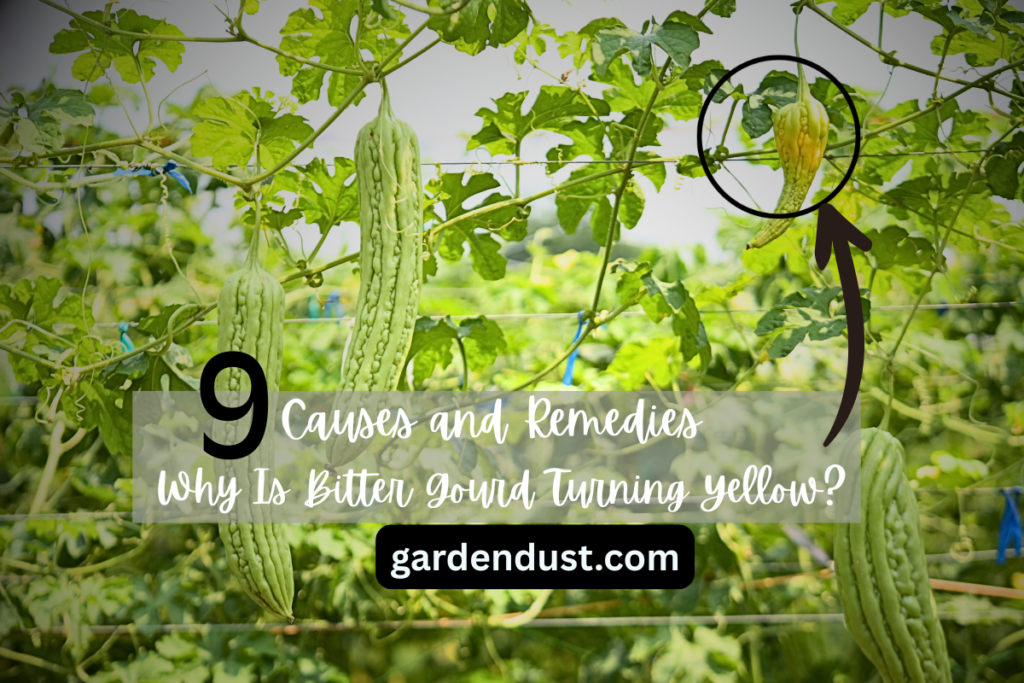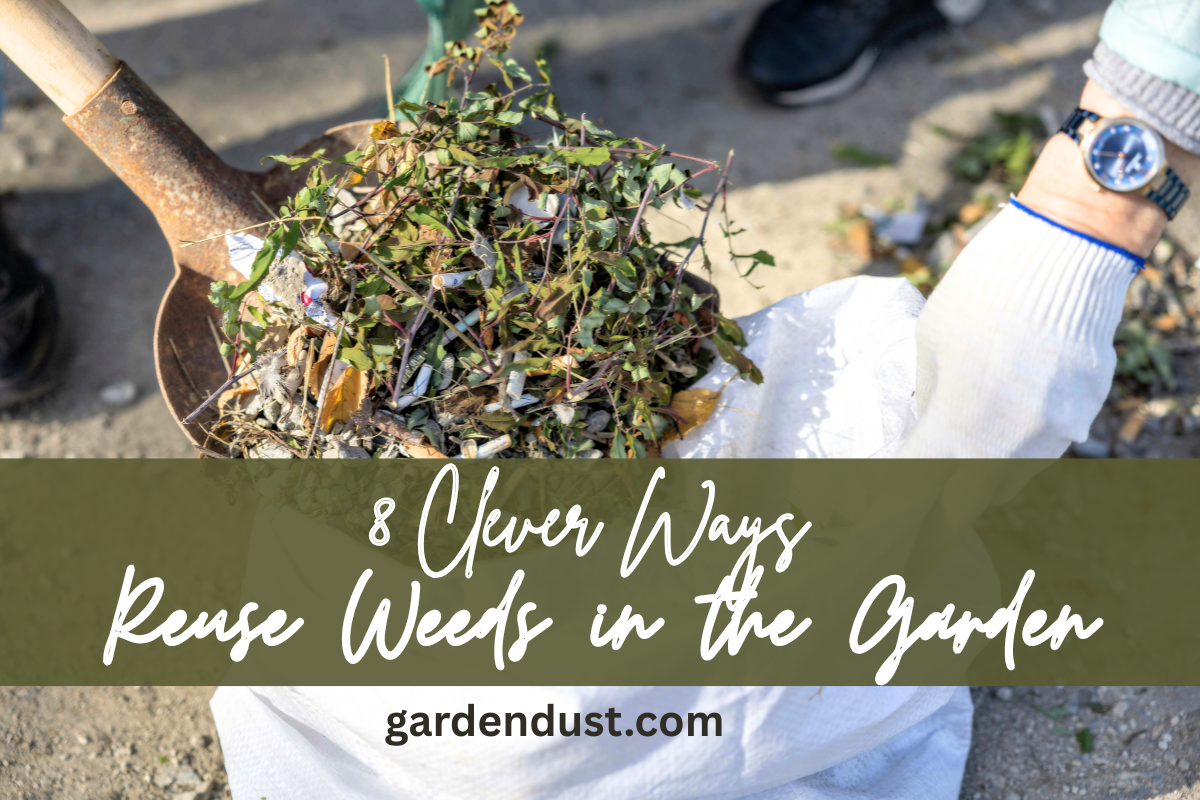Bitter gourd, also known as bitter melon or Momordica charantia, is a popular vegetable known for its numerous health benefits. However, many gardeners and farmers often encounter an issue where bitter gourds start turning yellow. This can be a frustrating problem, especially when it affects the fruit’s taste, texture, and nutritional value. In this article, we will explore Why Is Bitter Gourd Turning Yellow? Along with preventive measures and remedies to ensure a healthy harvest. Let’s start….
Understanding Bitter Gourd Yellowing
When bitter gourd fruits or leaves turn yellow, it usually signifies an underlying problem related to plant health, environmental factors, or pest infestations. The yellowing can affect different parts of the plant, including the leaves, vines, and fruits. Understanding the exact cause is crucial in addressing the issue effectively. Here is few Causes with solutions of Bitter Gourd Turning Yellow:-
1. Natural Ripening Process
Bitter gourd naturally turns yellow when it reaches maturity. As the fruit ripens, its green color fades, turning yellow and eventually orange. This ripening process is accompanied by the fruit softening and the seeds becoming red. If the yellowing occurs in mature fruits, it is a sign that they are overripe. Overripe bitter gourds lose their signature bitterness and develop a slightly sweet taste, which might not be desirable for culinary purposes.
Solution-
- Harvest bitter gourds when they are still green and firm.
- Regularly check the plants and pick fruits before they start changing color.
- Store harvested bitter gourds in a cool place to slow down ripening.
2. Overwatering or Poor Drainage
Excessive watering or waterlogged soil can lead to root rot, affecting nutrient absorption and causing yellowing in the leaves and fruits. Poor drainage further exacerbates the issue, leading to fungal infections and weak plants. Overwatering can also suffocate the roots, preventing them from effectively taking up oxygen and nutrients, leading to stunted growth and fruit yellowing.
Solution–
- Ensure proper drainage in the soil to prevent water accumulation.
- Water the plants moderately, allowing the soil to dry slightly between watering.
- Use well-draining soil to promote healthy root growth.
- Apply mulch around the base of the plant to retain moisture while preventing excessive water retention.
3. Nutrient Deficiency
Nutrient imbalances, particularly nitrogen, iron, and magnesium deficiencies, can cause yellowing in bitter gourd plants. A lack of essential nutrients affects chlorophyll production, leading to pale or yellow leaves and fruits. Nitrogen is crucial for leafy growth, while magnesium plays a vital role in photosynthesis. Iron deficiency leads to chlorosis, where the leaves turn yellow while veins remain green.
Solution–
- Use organic compost or balanced fertilizers to provide necessary nutrients.
- Apply nitrogen-rich fertilizers to promote healthy foliage.
- Supplement with micronutrients like iron and magnesium through foliar sprays.
- Rotate crops annually to prevent nutrient depletion in the soil.
4. Pests and Diseases
Pests such as aphids, spider mites, and whiteflies suck sap from the leaves, weakening the plant and causing yellowing. Additionally, fungal infections like powdery mildew, downy mildew, and bacterial wilt can lead to yellowing of fruits and leaves. Some pests also transmit viral diseases, further worsening plant health.
Solution–
- Inspect plants regularly for pests and use organic pesticides like neem oil.
- Introduce beneficial insects like ladybugs to control aphid populations.
- Use fungicides if fungal infections are detected.
- Maintain proper spacing between plants to reduce the risk of disease spread.
- Keep the garden weed-free, as weeds can harbor pests and diseases.
5. Viral Infections
Viral diseases such as the Mosaic virus cause mottled yellowing patterns on leaves and fruits. Infected plants usually exhibit stunted growth and distorted fruit shapes. Mosaic virus is commonly spread through insect vectors such as aphids and whiteflies, making pest control a critical aspect of prevention.
Solution-
- Remove and destroy infected plants to prevent the spread of the virus.
- Plant disease-resistant bitter gourd varieties.
- Keep the garden free of weeds that may harbor viral pathogens.
- Use floating row covers to prevent insect infestations that spread viruses.
READ ALSO:-How to grow and care for bitter gourd in container
6. Insufficient Sunlight
Bitter gourd is a sun-loving plant that requires at least 6–8 hours of direct sunlight daily. Lack of adequate sunlight can lead to weak plants, poor fruit development, and yellowing. When plants do not receive sufficient sunlight, photosynthesis slows down, leading to pale or yellow leaves and fruit.
Solution-
- Plant bitter gourd in a location that receives full sunlight.
- Prune nearby plants to prevent shading.
- If growing indoors, use grow lights to supplement light exposure.
- Ensure vertical trellising to maximize sunlight exposure for vine growth.
7. Temperature Fluctuations
Extreme temperatures, either too high or too low, can stress the plant, causing yellowing of leaves and fruits. Cold temperatures slow down growth, while excessive heat can cause wilting and yellowing. Bitter gourd prefers warm, tropical conditions, so temperature fluctuations can be a major cause of yellowing.
Solution
- Maintain optimal growing temperatures between 24–30°C (75–86°F).
- Use mulch to regulate soil temperature.
- Provide shade during hot summer months if necessary.
- Cover plants with protective materials during cold nights.
8. Chemical Exposure
Excessive use of chemical fertilizers, herbicides, or pesticides can lead to toxic buildup in the soil, affecting plant health and causing yellowing. Chemical burns from over-fertilization can cause leaf scorching, leading to fruit yellowing.
Solution
- Use organic alternatives instead of harsh chemicals.
- Follow recommended application rates for fertilizers and pesticides.
- Wash leaves with water if accidental chemical exposure occurs.
- Test soil periodically to monitor nutrient and chemical levels.
9. Poor Pollination
Poor pollination can lead to improper fruit development, causing the fruit to turn yellow and drop prematurely. Lack of pollinators such as bees can contribute to this issue. Pollination is essential for proper fruit set, and inadequate pollination results in deformed or non-developing fruits.
Solution–
- Encourage natural pollinators by planting flowers that attract bees.
- Hand-pollinate using a brush if pollinator activity is low.
- Avoid using chemical pesticides that deter pollinators.
- Grow bitter gourd in a biodiverse environment to attract beneficial insects.
Preventive Tips –
To prevent bitter gourd from turning yellow, follow these best practices-
- Plant in Well-Drained Soil-Avoid waterlogging by using well-drained, nutrient-rich soil.
- Regular Pruning-Remove dead or diseased leaves to improve air circulation.
- Proper Spacing– Allow enough space between plants to reduce competition for nutrients.
- Crop Rotation– Rotate crops to prevent soil depletion and reduce disease risk.
- Timely Harvesting-Pick bitter gourds when they are still green to avoid overripening.
- Pest Monitoring– Regularly check plants for pests and take preventive actions before infestations become severe.
Bitter gourd turning yellow can be caused by various factors, including natural ripening, nutrient deficiencies, pests, diseases, and environmental stress. By identifying the root cause and taking corrective actions, gardeners can ensure a healthy and productive bitter gourd harvest. Implementing good gardening practices, maintaining soil health, and ensuring proper care will help in preventing yellowing and improving the overall quality of the crop. With the right approach, bitter gourd can thrive and yield high-quality, green, and nutritious fruits. Happy Gardening…






